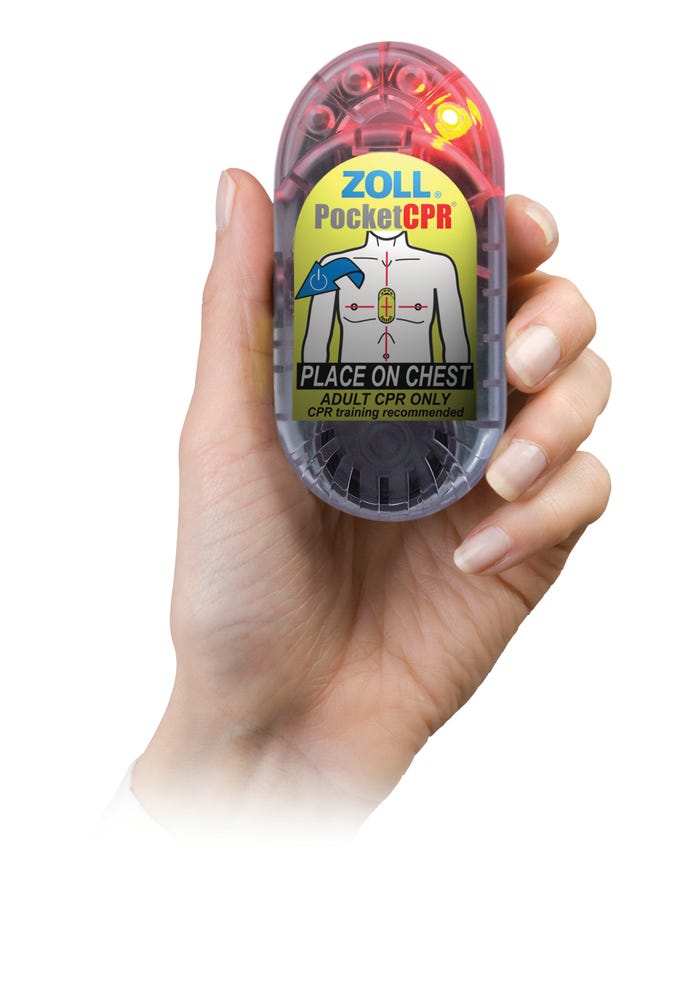An accelerometer converts a CPR product’s motion into measurement data to ensure that CPR is performed correctly
January 12, 2011
|
The PocketCPR features an accelerometer that enables feedback on rate and depth of chest compressions during CPR. |
When a person experiences sudden cardiac arrest, chances of survival drop 7 to 10% with each minute that passes without CPR and defibrillation, according to the American Heart Association. Because there's no time to waste, it's critical that the rescuer achieves the target rate and depth of chest compressions.
To ensure that rescuers reach the recommended compression depths of at least 2 in., Bio-Detek Inc. (Pawtucket, RI), a subsidiary of Zoll Medical Corp., developed the PocketCPR. A palm-sized device, the PocketCPR is placed directly on the chest of the person suffering cardiac arrest. The rescuer then performs CPR on top of the device. "An accelerometer helps our algorithm determine the depth of chest compressions that the rescuer is performing and gives real-time feedback to correct it to the proper depth. We also have features such as voice prompts and a metronome that help to coach the rescuer," explains Tim McGough, marketing director and paramedic at Bio-Detek.
Enabling this real-time feedback is the company's Real CPR Help core technology, which is based on MEMS accelerometer technology provided by Analog Devices Inc. (ADI; Norwood, MA). "You can measure acceleration, but to actually calculate distance of the chest compression, you have to perform the double integration," notes Paul Errico, a strategic marketing manager in ADI's healthcare group. "That's done mathematically in the PocketCPR."
Selected for the PocketCPR when the product development cycle began several years ago, ADI's ADXL322 iMEMS accelerometer was able to provide the reliable measurement capability required for the application. "Traditionally, if you actually have to measure the depth of compression in the z dimension, then you would have to use a three-axis accelerometer," Errico says. "The fact is that they're actually using an x-y sensor--a two-axis accelerometer--and placing it on its side."
In addition to being a two-axis accelerometer, the iMEMS product featured a compact 4 x 4-mm form factor suitable for use in the PocketCPR handheld device. It also boasted low power consumption of about 340 µA, and could operate on power supplies as low as 2.7 V dc. Furthermore, because the typical noise floor was less than 220 micro g per root Hertz, the accelerometer was capable of sensing small tilt changes in the CPR device using the narrow bandwidths typical of human motion, according to the company.
Among the most significant advantages that the iMEMS accelerometer brought to the PocketCPR, however, was zero-g bias stability, according to Errico. "Zero-g bias stability is important because as you're performing this depth of compression, over time if you get tired and you're not compressing as far or you're not allowing the device to come all the way up, you can actually start having errors that accumulate," he says.
Ultimately, the use of the iMEMS accelerometer contributed to the development of a unique finished device, according to McGough. "The PocketCPR is the only device of its kind currently on the market that uses the accelerometer to coach rate and depth of chest compressions."
You May Also Like



